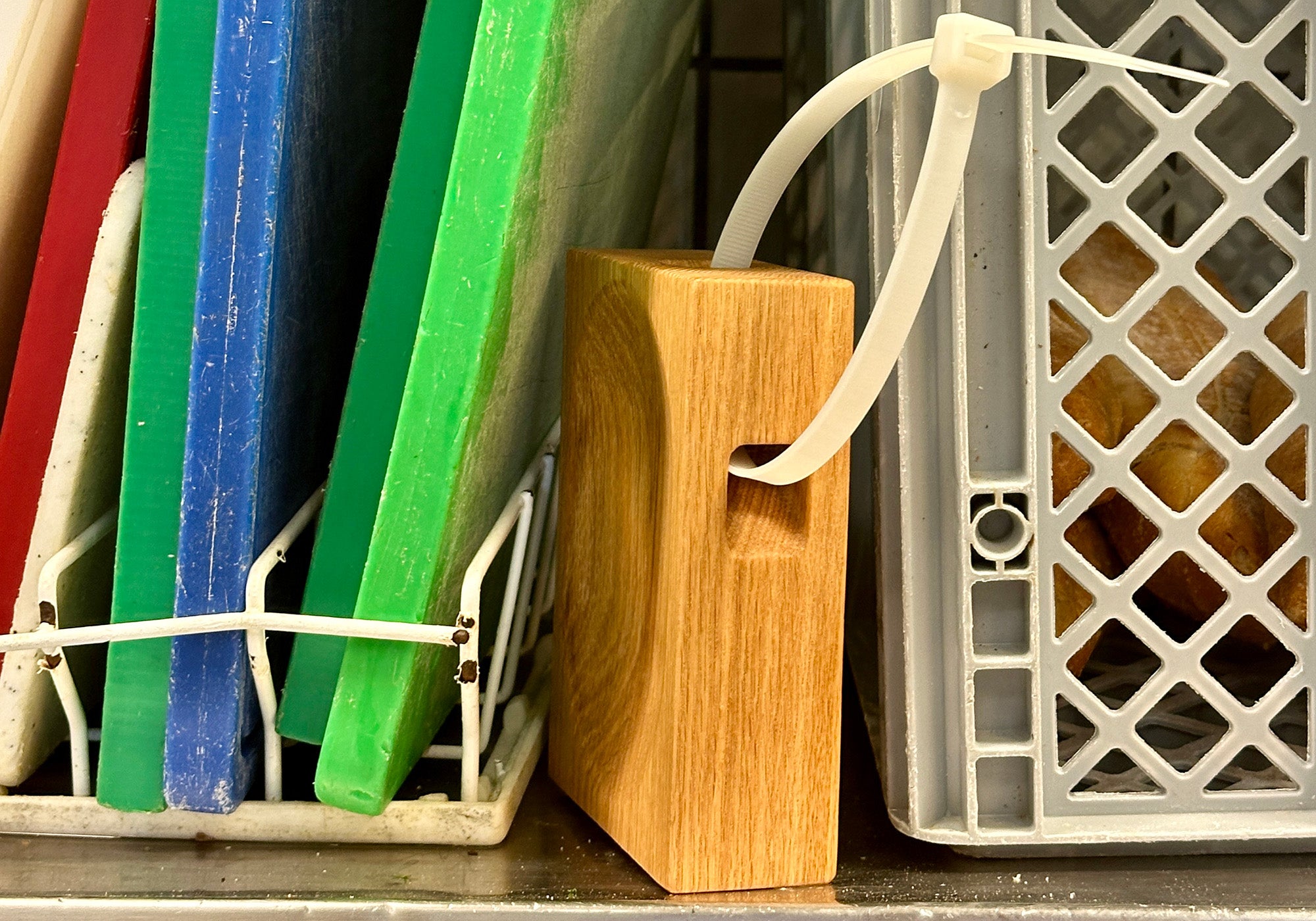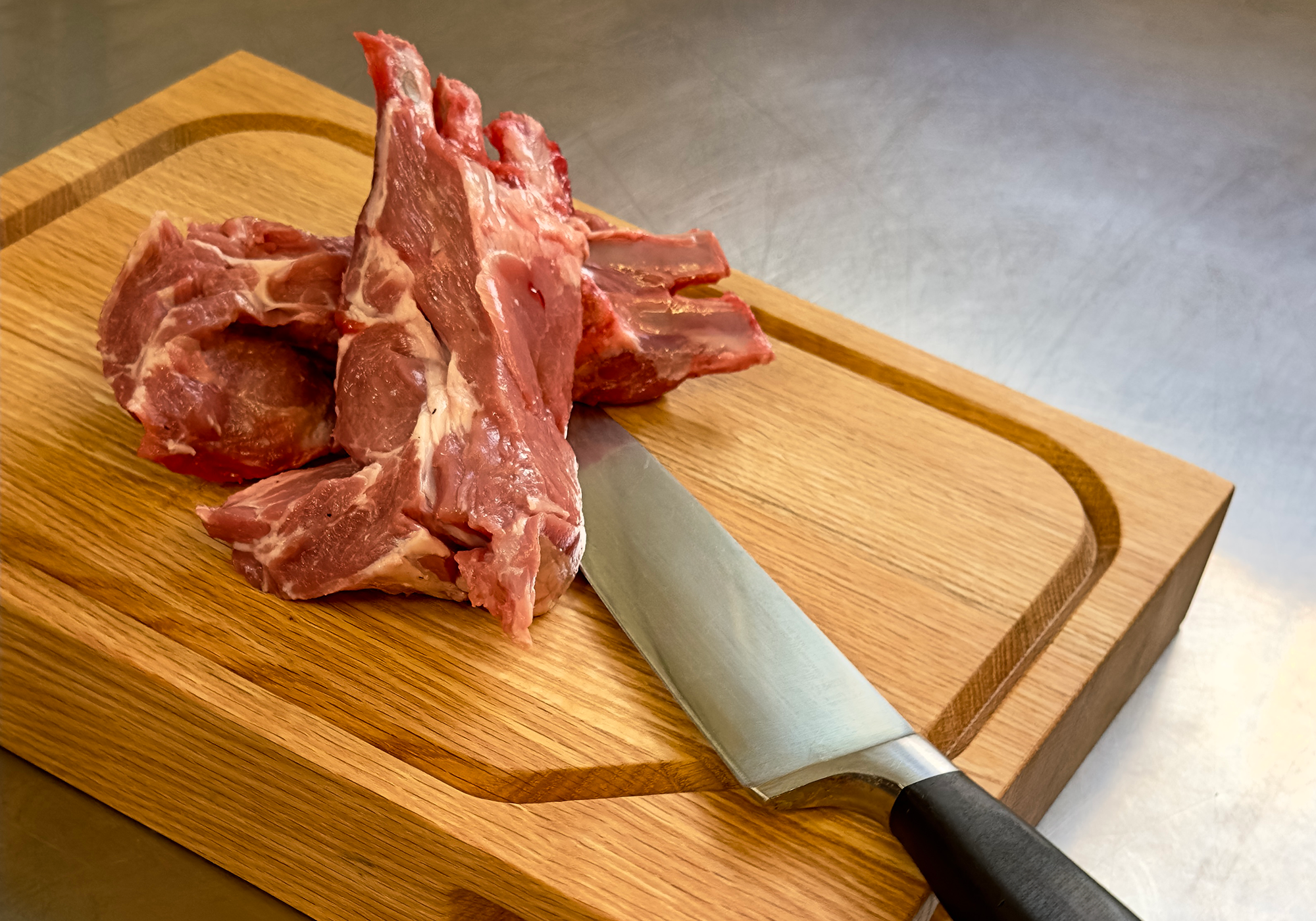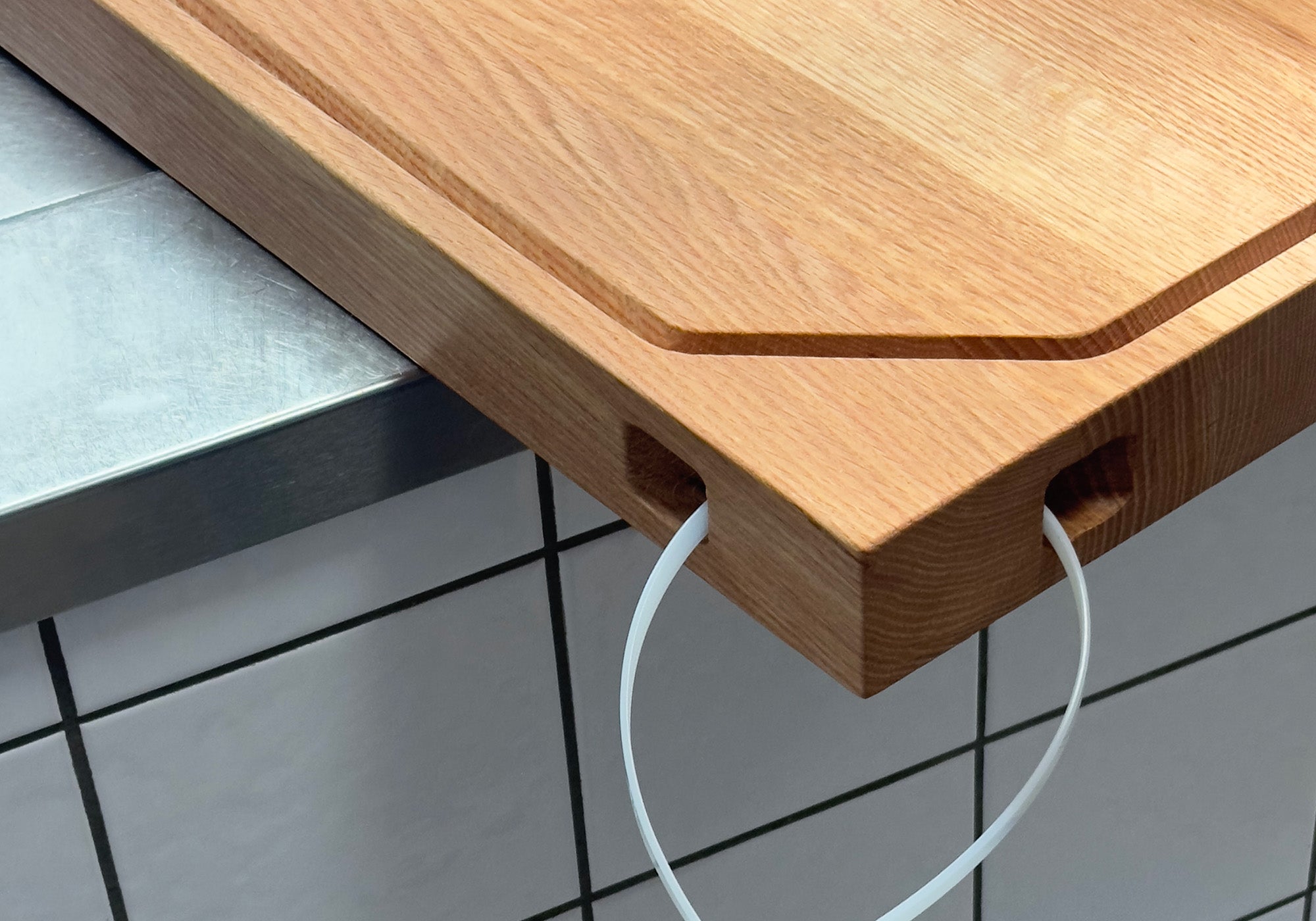
Wood vs. Plastic: Evaluating Cutting Board Materials
When it comes to choosing a cutting board, the decision is more significant than it may first appear. After all, this is a tool you’ll use daily, and it plays a crucial role in both your cooking experience and the health of your kitchen. In this guide, we’ll explore the benefits and drawbacks of wood—particularly oak and walnut—versus plastic cutting boards, with a special focus on the growing concern of microplastics.

Aesthetic Appeal of Wooden Cutting Boards
Oak and walnut cutting boards have long been favored for their natural beauty and durability. These woods are not only pleasing to the eye but also enhance the overall look of your kitchen. Oak, with its strong grain patterns, and walnut, known for its rich, dark hue, bring warmth and elegance to your workspace. In contrast, plastic cutting boards, while available in various colors, often lack the visual appeal that wood naturally provides. A wooden board, when well cared for, can become a centerpiece in your kitchen—a testament to both form and function.

Durability and Maintenance: Wood vs. Plastic
One of the key advantages of wood, especially oak and walnut, is its gentle nature on knife blades. The fibers in the wood slightly give way under the pressure of a knife, preserving the sharpness of your tools over time. This characteristic makes wood cutting boards an excellent choice for those who value their knives and wish to maintain their quality. Plastic boards, while durable, tend to show cuts and scratches more quickly. These grooves can become a breeding ground for bacteria, and unlike wood, plastic lacks the ability to “self heal” through sanding or oiling. Additionally, the hardness of plastic can dull knives faster than wood, leading to more frequent sharpening or replacement.

Hygiene Considerations in Cutting Board Materials
There’s a common misconception that wood cutting boards are less hygienic than plastic. However, studies have shown that wood, particularly oak and walnut, possesses natural antibacterial properties. These woods are porous, which might seem like a disadvantage, but this very porosity allows the wood to trap and neutralize bacteria within its fibers, where they eventually die off. Plastic cutting boards, on the other hand, are non-porous, which means they don’t absorb liquids or bacteria. While this may seem ideal, the reality is that bacteria can easily lodge into the cut marks on plastic boards, and over time, these boards can become harder to clean effectively. Moreover, as plastic boards wear down, they can release microplastics—tiny particles that can contaminate your food and, ultimately, your body.

Environmental Impact: Choosing Sustainable Options
When considering the environmental impact, wood cutting boards, particularly those made from sustainably sourced oak and walnut, stand out as a more eco-friendly option. Wood is a renewable resource, and when a wooden cutting board has reached the end of its life, it can be composted or recycled. Plastic boards, in contrast, pose a significant environmental challenge. Most plastic cutting boards are not biodegradable and contribute to long-term waste problems. Even more concerning is the issue of microplastics. As plastic boards degrade, they can release these tiny particles, which can be harmful to both the environment and human health.

Conclusion: Making an Informed Choice
In conclusion, if you’re looking for a cutting board that combines beauty, durability, and a commitment to sustainability, oak and walnut boards are exceptional choices. They offer a gentle surface for your knives, are naturally resistant to bacteria, and have a minimal environmental footprint. Plastic boards, while practical in certain contexts, come with significant drawbacks, particularly in terms of hygiene and environmental impact.
By choosing a wood cutting board, you’re not just making a
purchase—you’re investing in a tool that will enhance your cooking experience,
protect your health, and contribute to a more sustainable world.
